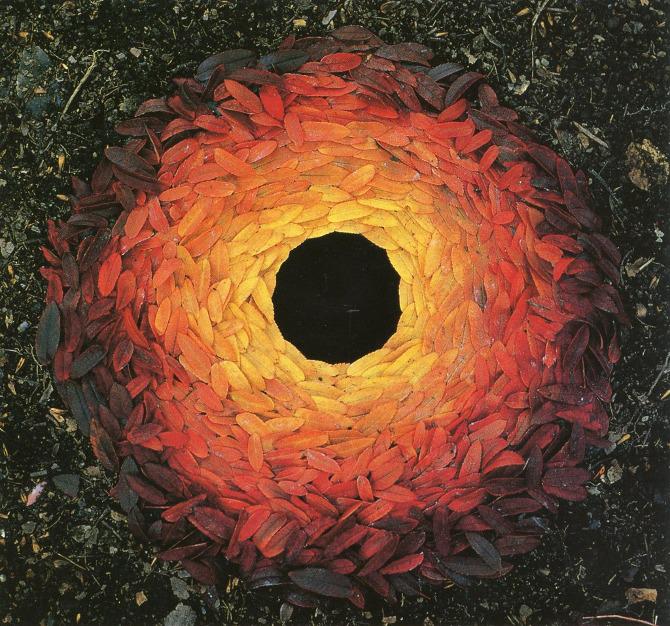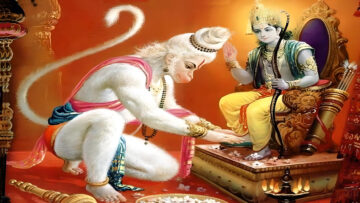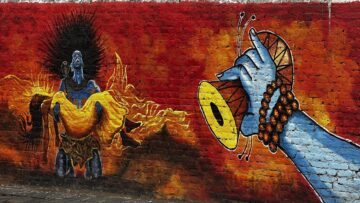Call for Papers
Indic Academy’s Inter-Gurukula University Center is pleased to announce a Conference on Indic and Pagan Environmentalism in January 2020 at Hyderabad.
At the conference, Indic Academy is also pleased to launch Indic-Pagan Sculpture Park at Hyderabad. The sculpture park will comprise of Land and Environment Art installations by artists from around the world inspired by the reverence Indic and Pagan traditions have towards nature.
Indic, Pagan and Environmentalism
Indic: By ‘Indic’ we mean the entire cultural complex made up of Vedic , folk ,tribal traditions and non-Vedic (Buddhist and jain) traditions of India.
Pagan: Pagan cultures are the animist, pantheistic and nature-worshipping religious traditions of the world including the Indian traditions with these features.
Environmentalism: Our use of the word “Environmentalism” instead of “Ecology” is deliberate. Ecology is either the discipline of Ecology as a branch of Biology or the actual environment, flora and fauna etc of a place. If we want to refer to a worldview, a philosophy, a point of view, an ideology, in favor of ecology or environment it must be called “Environmentalism”. We would like to focus on Eco-friendly, Environment-sustaining worldviews and ideologies inherent in Indic and Pagan cultures, texts and traditions. Hence the title “Indic and Pagan Environmentalism”
Recognition for Pagan Environmentalism
The attention towards the value of the pre-modern /traditional cultures towards Eco-friendly and Environment sustaining thinking has been recognized right from the moment the world awoke to the ecological crisis manifest in several different forms including climate change. But it is Lynn Townsend White Jr’s “The Historical Roots of Our Ecologic Crisis (1967)” that has been the watershed in this realization. His lecture on December 26, 1966 at the Washington meeting of the American Association for the Advancement of Science was later published in the ‘Journal of Science’ in 1967. White marked the Industrial Revolution as a fundamental turning point in our ecological history. He suggests that at this point the hypotheses of science were married to the possibilities of technology and our ability to destroy and exploit the environment was vastly increased. Nevertheless, he also suggests that the mentality of the Industrial Revolution, that the earth was a resource for human consumption, was much older than the actuality of machinery, and has its roots in medieval Christianity and its attitudes towards nature. Citing the Genesis creation story, he argued that Judeo-Christian theology had swept away Pagan animism and normalized exploitation of the natural world. He says,
“In Antiquity every tree, every spring, every stream, every hill had its own genius loci, its guardian spirit. These spirits were accessible to men, but were very unlike men; centaurs, fauns, and mermaids show their ambivalence. Before one cut a tree, mined a mountain, or dammed a brook, it was important to placate the spirit in charge of that particular situation, and to keep it appeased. By destroying Pagan animism, Christianity made it possible to exploit nature in a mood of indifference to the feelings of natural objects.”
For an Indian reader, what is described in these words sounds very familiar, with a difference that the past tense in these words is present tense for them.
In another seminal work “Man’s Responsibility for Nature: Ecological Problems and Western Traditions” (1974) the author John Passmore uses the prevalence of Pagan animism in the ‘western societies’ and their ‘western tradition’ during their early or pre-Christian history as one of the defenses for ‘western traditions.’
Pagan and Pagan Environmentalist movements
Many Pagan traditions continue to thrive in different parts of the world and currently there is a renewed pride in the followers of these traditions particularly from the point of view their potential to contribute to the saving of the earth and nature. There are neo Paganist movements reviving the ancient Greko-Roman and other Pagan traditions that are extinct. European Congress of Ethnic Religions, was founded in June, 1998 as part of the World Pagan Congress. The organization’s name was the result of a day-long passionate debate. The words “Pagan” and “heathen” were rejected because of their perceived cultural associations with immorality, violence and backwardness. The word “polytheistic” was also rejected as an oversimplification. “Indigenous” was seen as satisfactory on a linguistic level but was voted down with regard to its established use by groups distinguished from European colonizers. Other suggestions were terms along the lines of “old religion” and “ancestral religion”. “Ethnic”, the Greek equivalent to the Latin Paganus in early Christian sources, was eventually agreed on. The words’ history and the connection to ethnology were things that appealed to the majority of the participants.
Pagan Federation declares Paganism as a World Religion. It published a statement on the Earth Day 2015 titled “A Pagan Community Statement on the Environment “. It is signed by 24 Pagan organizations, from around 100 countries.
The point is that Indic folk and tribal traditions that survived for millennia and continue to live vibrantly, through ‘Hinduism’, the cultural complex to which they contributed their features immensely while retaining their individuality, of course, with the influences of the other members of the cultural complex, did not get due prominence in all these global discussions on the potential of Pagan/indigenous/ethnic religious traditions towards the contemporary environmentalism.
The Conference
Indic Academy’s Inter-Gurukula University Centre is proposing to organize a conference on “Indic and Pagan Environmentalism” to reclaim this due prominence and to join the global efforts in the direction of repairing our environment and saving the earth, by bringing Indic and other Pagan traditions on to the same platform.
The conference is aimed at highlighting the potential of the other components too of the Hindu cultural complex to the resolution of the present ecological crisis, to a healthy eco-friendly life and to the prosperity of humans through the prosperity of nature and the earth. As such, the conference would like to focus on the environmentalist aspects of the most prominent and the well-recognized component of the complex, namely, the Vedic tradition.
The non-Vedic components of the Indic cultural complex such as the Buddhist and the Jain too form the main focuses of the conference.
In the process, the conference will create a great opportunity to discuss the commonalities among and the distinctions of the Vedic, folk and tribal components of the Hindu cultural complex at one level and the commonalities among and the distinctions of the Hindu cultural complex and the non-Vedic traditions such as the Buddhist and the Jain traditions at the other in the aspect of the environmentalist spirit and ideas. More particularly this will be an opportune occasion for a comparative study of all these Indic traditions with the worldwide Pagan traditions in the aspect of environmentalism. Such a study will pave the way for (demands for ) a radically new curriculum for the discipline of Comparative Religion which currently (a) covers only the living organized religions (b) does not cover extinct religions (c) does not cover the currently living ethnic/indigenous/Pagan religions (d) does not cover the comparison of extinct or living Pagan religions with the living organized ‘religions’ (cultural complexes) like Hinduism. (Nagaraj Paturi, the Director, IGUC included comparison of extinct or living non-Indic Pagan religions with Hinduism in the Comparative Religion curriculum designed and taught by him during 2007-2009 at FLAME School of Liberal Education) .
Study of Pagan environmentalism will also contribute fresh ideas to “Religion and Environmentalism” which is an emerging interdisciplinary subfield in the academic disciplines of Religious Studies, Religious Ethics, the Sociology of Religion amongst others, with environmentalism and ecological principles as a primary focus, since currently even in this field, only the living major/ organized religions are being focused upon.
Buddhism and Jainism, Indic fore-runners of Contemporary Compassionate Environmentalism
One of the consequences of environmentalist awareness is the critique of modernity and Science and Technology. It is against the nature-dominating, nature-controlling and nature-exploiting attitude in the contemporary Science and Technology and its potential to destroy nature and its responsibility for the present ecological crisis. This is different from the approach discussed earlier which is for Paganism as nature-friendly and against Christianity for its anthropocentrism. Masanobu Fukuoka, Graham Bell, Bill Mollison and Robert Hart are an example of such critics of modernity and Science and Technology. Another stalwart among Eco-philosophers, Henryk Skolimowsky, in his Technology and Human Destiny (1983) comes up with a highly systematic critique of the contemporary S & T for its anti-environmentalist worldview foundations. In this context , it may not be out of place to observe that it is this critique of modernity and S & T, that truly deserves to be called ‘post-modern’ since it is this that truly questions , point out and moves away from the worldview fundamentals and foundations of modernity; what is being now called as ‘post-modern’ is in fact more modern than the modern , and continues all the fundamental features of modernity such as its anti-religious , anti-traditional , anti-past etc. , as such is just ultramodern and does not deserve to be called as post-modern. Whereas the environmentalist critique of modernity is a true disruption of modernity.
Coming back to our point, the works of Masanobu Fukuoka, Graham Bell, Bill Mollison and Robert Hart etc. lead to what is called as perma-culture, a new life- style movement based on this anti S & T environmentalism.
The anti S & T nature of perma -culture can be noted in the shifted principles of Natural Farming founded by Fukuoka. Fukuoka, who was once a scientist at Yokohama Customs Bureau shifted to Natural Farming . He lays out what he calls the “four principles of natural farming” as guidelines for any one who wants to try to create a natural garden, in his book, One Straw revolution (1978, 33-34). These are:
- No cultivation. This means no plowing or turning the soil. The earth cultivates itself naturally.
- No chemical fertilizer or prepared compost. These practices drain the soil of its natural nutrients and increase human interference in the natural cycle.
- No weeding by tillage or herbicides. Weeds are an important part of building soil fertility and in balancing the biological community. As a fundamental principle weeds should be controlled, not eliminated.
- No dependence on chemicals. Weak plants develop from such unnatural practices which increases their vulnerability to disease and insects.
The opposition to technology in Permaculture reminds us of the opposition to what is called as Udyoginī hiṃsā or occupational violence in Jainism.
Fukuoka acknowledges his indebtedness to Buddhism, Gandhi and their philosophy of compassion. The conference focuses on Buddhism and Jainism as two ancient Indic traditions and the contemporary Indic philosophies such as Gandhism that are playing an important role in contemporary environmentalist movements that have their foundations in Buddhism and Jainism comparing them to contemporary eco-philosophies such as Permaculture.
Vedic Worldview, the Indic forerunner of the contemporary balanced environmentalism
- Between the contemporary compassionate extreme and aggressive extreme towards nature lies the contemporary model of balance between conservation and development. This approach has got to do with no opposition to use of technology. No opposition to interfering with nature and its processes through man-made tools and techniques. But the technology used is sought to be eco-friendly and interference with nature through man made tools is sought to be to the extent and in the manner not to lead to ecological imbalance.
- Vedic worldview as found in the Vedic texts, in the culture reflected in those texts and in the Vedic aspects of the currently living Hindu cultural complex has a similar combination of and balance between passion and compassion, violence and non-violence, conservation and prosperity etc.
- Vedic texts such as itihasas (dynastic legendary sacred narratives), puranas (works of collections of sacred narratives and sacred instructions) and kavyas (narrative poems) have descriptions of a social life of diversity where rishis or sages lived a life of compassion very similar to the permaculture of Fukuoka. The remaining society is described to be living a life of passion, but with the ideal of living with Dharma, the nature-sustaining principle (etymologically that which holds, sustains). They passionately pursued prosperity but only through the path of conservation. Rishis lived the life of non-violence. The Kshatriyas (etymologically, protectors from harm), the warrior class lived the life of violence intended to save the vulnerable from harm from the cruel and the unethical and to save nature from the violence committed by the anti-nature. Passionate society respected the compassionate Rishis and the compassionate Rishis loved the passionate, instructing them Dharma, the nature-sustaining principle. Neither imposed their life style on the other. Violent warrior class respected the non-violent Rishis and the non-violent Rishis loved the violent warrior class instructing them to use their violence for non-violence / no violence to the vulnerable. Neither demanded or expected the other to live their life style. In contemporary parlance, it can be said that these texts depict a society where Permaculture community and the community pursuing Sustainable Development lived side by side with mutual love and respect.
- An interesting aspect of the Vedas, the extremely ancient texts of the Vedic tradition is that they mostly include texts in praise of multiple divinities , an aspect comparable to the polytheism of the Indic and non-Indic Pagan traditions, these divinities being entities in and aspects of nature, some concrete some abstract, again an aspect similar to the nature-worship in the Indic and non-Indic Pagan traditions. But one great distinction of the tradition of the Vedas was that they were always associated with Yajnas, the fire-mediated sacred procedures through which they interacted with their divinities, different aspects of nature. Though the Indic folk and tribal Pagan traditions have a different kind of sacred procedures such as offerings to images to worship their divinities, it is probably the common environmentalist worldview that lead to a harmonious inter-cultural interaction among the Vedic and the non-Vedic Pagan (Indic folk and Indic tribal) traditions leading to a ‘third’ ‘mediating’ culture , a syncretism of the Vedic with the folk and the tribal Pagan traditions. One way, probably, of explaining the new features of Puranas and Agamas, the texts that evolved later to Vedas in the Vedic tradition is that those texts reflect this ‘third’, ‘mediating’ culture. It is probably the typically environmentalist diversity-oriented nature of the Vedic, and the non-Vedic Pagan (Indic folk and the Indic tribal) traditions that they continued to retain their distinctions for millennia despite contributing to this syncretic ‘third’ ‘mediating’ culture. It is the cultural complex that includes this ‘third’ ‘mediating’ culture with multiple diverse sub-traditions to the most part and the individual cultures of the Vedic, and the non-Vedic Pagan (Indic folk and the Indic tribal) traditions, that is being called ‘Hinduism’ today.
- Another distinct aspect of the Vedic tradition is that it has very ancient texts that very clearly articulate its environmentalist worldview in an explanatory way. For example, Bhagavadgita, an ancient Vedic text, held in high esteem as the most central texts by the entire Hindu cultural complex, describes the mutual relationship between nature and humans not as that of domination, but of friendship and says,
sahayajñāḥ prajāḥ sr̥ṣṭvā purōvāca prajāpatiḥ |
anēna prasaviṣyadhvamēṣa vō’stviṣṭakāmadhuk || 3-10||
dēvānbhāvayatānēna tē dēvā bhāvayantu vaḥ |
parasparaṁ bhāvayantaḥ śrēyaḥ paramavāpsyatha || 3-11||
iṣṭānbhōgānhi vō dēvā dāsyantē yajñabhāvitāḥ |
tairdattānapradāyaibhyō yō bhuṅktē stēna ēva saḥ || 3-12||Creator, in the beginning created human beings along with the Yajnas, the fire-mediated sacred procedures (eco-friendly/nature nourishing/sacrificial procedures) and said through these procedures get what you want; these fulfil whatever you want. Through these procedures, nourish and nurture the devas = divinities (nature forces) and they nourish and nurture you back. Thus ‘treating’ each other, may you the humans and the nature forces both achieve the best of the welfare. Luxuries and pleasures that you want are provided by the devas = divinities (nature forces) who get treated by your Yajnas, the fire-mediated sacred procedures (eco-friendly/nature nourishing/sacrificial procedures); thus, you enjoy all the luxuries provided by them.Though the word Yajna was originally used in the sense of the fire-mediated nature-nourishing sacred procedures only, gradually it acquired a semantic expansion to refer to any nature-sustaining activity involving organismic organization ( yaj = to organize) of sacrificial (= selflessly giving) activities. - In the same context, a few verses later, the book even talks of following the ‘cycle’, a concept that is so frequently found in the contemporary ecological literature and says,
ēvaṁ pravartitaṁ cakraṁ nānuvartayatīha yaḥ |
aghāyurindriyārāmō mōghaṁ pārtha sa jīvati || 3-16||
One who does not follow, life according to (the principles of) the cycle run thus (as described in the previous verses) is a sinful creature and lives a vain life. - Incidentally the idea of cycle is central to the Hindu cosmology starting from the description of ‘Creation’ in the hymn to the (Cosmic) Person, connected into the concepts of cosmic cyclic time scales of Puranas. Mircea Eliade, the guru of the gurus of Religious Studies in his book “Myth of the Eternal Return”, highlighting the distinction of this view in cultures like the Hindu says,
“The essential theme of my investigation bears on the image of himself formed by the man of the archaic societies and on the place that he assumes in the Cosmos. The chief difference between the man of the archaic and traditional societies and the man of the modern societies with their strong imprint of Judaeo-Christianity lies in the fact that the former feels himself indissolubly connected with the Cosmos and the cosmic rhythms, whereas the latter insists that he is connected only with History.”
His whole book is a critique of the ‘tyranny’ of ‘History’ which he says is rooted in the ‘Linear Time’ of Judaeo-Christian tradition over the traditional societies that believed in ‘Cyclic Time’. - Puranas (works of collections of sacred narratives and sacred instructions) of the Hindu cultural complex have a special triad of the supreme divinities for creation, sustenance and devolution cycles of the Earth’s eco-system. In each cycle, a monstrous power arrogantly captures the nature forces such as fire, wind, light, etc. and dominates and tyrannizes them (exhibits the attitude of the nature-controlling S & T ), tortures the performers of fire-mediated sacred procedures meant to nourish nature, torments those who are dedicated to the power of sustenance and at each such instance, the power of sustenance manifests itself on the Earth in some form or the other, destroys the destroying force and restores the Earth / nature to its prosperity. Vedic texts such as the Bhagavadgita clearly articulate the theory behind such narratives saying that whenever Dharma, the nature-sustaining principle is harmed/damaged, the force of sustenance manifests itself and restores Dharma, the nature-sustaining principle.
- Another interesting aspect of the environmentalism inherent in the Hindu cultural complex has similarity to a strand of the contemporary environmentalist movement called Ecofeminism. In the 1993 essay entitled “Ecofeminism: Toward Global Justice and Planetary Health” authors Greta Gaard and Lori Gruen outline what they call the “ecofeminist framework” in which they held the rise of patriarchal religions and their establishment of gender hierarchies along with their denial of immanent divinity as responsible for the present ecological crisis. But in the Hindu world view, the power of sustenance mentioned above is viewed in a feminine form too. The Earth is viewed as a feminine divinity, Bhūdēvī. In the Indic folk and tribal Pagan traditions, there is a huge number of feminine divinities, all of them being feminine divine forms in which trees, plants, ant-hills, snakes, water streams such as brooks and rivers, water bodies such as tanks etc. are viewed. There are fertility divinities worshipped in the form of flowers, creepers, crops, earth etc. There is a huge tradition of village goddesses which is nothing but viewing the whole village ecosystem as a feminine divinity. Entire forest eco-system is viewed as a feminine deity by the tribals who too have their feminine deities of the landscape entities. Epidemics and natural calamities are viewed as her malevolent aspect. Greenery and prosperity of nature is viewed as her benevolent aspect. This is another area where the Vedic tradition and the Indic folk and tribal Pagan traditions have commonality. The concept of dēvī, the feminine divine is found in the Vedas themselves. Many aspects of nature are viewed as dēvī , the feminine divine there. Puranas (works of collections of sacred narratives and sacred instructions) have the supreme power of sustenance in a feminine form. In these narratives, the supreme feminine power of sustenance manifests in several different forms to kill the aggressors of environment/nature. There is a whole Purana called dēvībhāgavatam dedicated to this supreme feminine power of sustenance, Dēvī. Dēvī is also known by the name śakti, the Power. A number of spiritual traditions śāktēya, tantra, śrīvidyā etc. developed around this supreme feminine divine. The ‘third’ ‘mediating’ culture , a syncretism of the Vedic with the folk and the tribal Pagan traditions, resulting from a harmonious inter-cultural interaction among the Vedic and the non-Vedic Pagan (Indic folk and Indic tribal) traditions based on the common environmentalist worldview has a great place for this Dēvī / śakti . Indic folk and tribal Pagan traditions view their local feminine deities as local forms of that all pervading supreme feminine divine. Again there is a significant explanatory literature in the Indic tradition explaining this ecofeminism in the Vedas, Puranas and the common Hindu cultural complex.
- The explanatory literature of the Indic tradition almost always shares the spirit of Deep Ecology, another contemporary trend in environmentalism. The hymn to the Cosmic Person in the Vedas is a celebration of the organismic intricate interconnection and interdependence among all parts of the cosmos that the contemporary Deep Ecology advocates. Every eco-system or a system with the self-regulation and self-sustenance is called purusha, ‘person’ in this system of thought and the source of such an auto nature of such system is given the name ātman , self in here. Humans in the explanatory literature of the Indic tradition almost always are viewed as part of bhūtāni, beings. Interconnections and continuities among all bhūtāni, beings, jaḍa , the inanimate / the non-conscious and the animate / the conscious, are discussed through several detailed theoretical frameworks. Ōne of such frameworks is that of cosmos as yajna , the process similar to the fire-mediated sacred procedures, a unifying organization of life-generating contributions from all the beings. Cosmos is described as Yajna that consumes sub-yajnas, and that Yajna is described as performed by nature forces.
- Upanishads (etymologically, close sittings), the Vedic texts discussing the concepts of ātman = self, Bramhan = the imperishable essence manifest as cosmos, also known as paramātman (parama + ātman ) = self of the cosmic ecosystem etc. These texts almost always talk of the all pervading nature of the divine essence of the cosmos. The key concepts of these texts such as jīva (individual self) , jagat (the world), īśvara (the world-running principle), bramhan (the imperishable essence manifest as cosmos)/paramātman (self of the cosmic ecosystem) are explained as intricately connected through ideas such as brahman and/or īśvara permeate the jagat and jīvas or brahman and/or īśvara are made up of a combination of jīvas or jīva (individual self) is the limited version of bramhan (the imperishable essence manifest as cosmos)/paramātman (self of the cosmic ecosystem) etc.
The conference is intended to cover all these environmentalist aspects of the Indic Vedic , non-Vedic ( Buddhist, Jain), folk and tribal Pagan traditions alongside those of the Pagan traditions of the other parts of the world.
Indic Academy’s Inter Gurukula University Centre invites papers on:
- Environmentalist aspects in individual Pagan traditions of the world
Contemporary environmentalist ideas and actions around Pagan traditions of the world - Comparative study of the environmentalist aspects of different Pagan traditions of the world
- Environmentalist aspects in various Vedic, non-Vedic (Buddhist, Jain), folk and tribal Pagan traditions.
- Comparative study of the environmentalist aspects of various Vedic, non-Vedic (Buddhist, Jain), folk and tribal Pagan traditions and the environmentalist basis for the syncretism in the Indic /Hindu cultural complex.
- Scope for building environmentalist ideas and actions around Vedic , non-Vedic ( Buddhist, Jain), folk and tribal Pagan traditions individually and jointly with the contemporary environmentalist ideas and actions around Pagan traditions of the world.
Dr Nagaraj Paturi, Director of Inter Gurukula -University Center is curating the conference.
Abstracts may be submitted to namaste@indica.org.in by 31st October. Full papers may be submitted by 15th December. The conference is scheduled for the second half of January 2020.
For more information, refer to this brochure.
Disclaimer: The opinions expressed in this article belong to the author. Indic Today is neither responsible nor liable for the accuracy, completeness, suitability, or validity of any information in the article.











